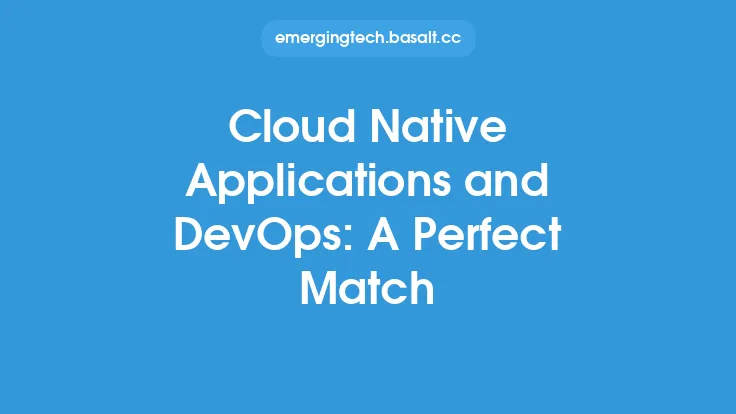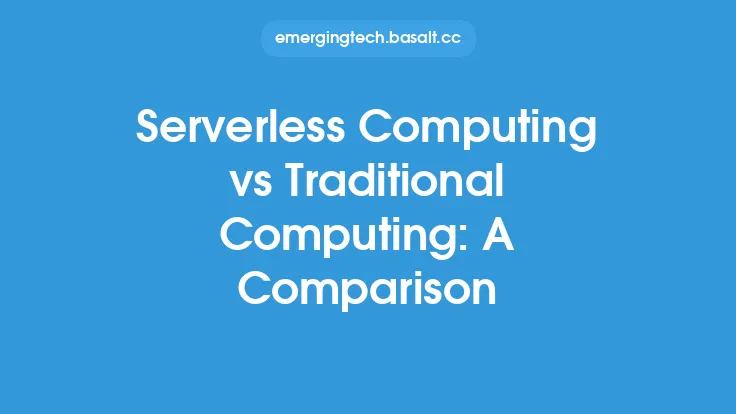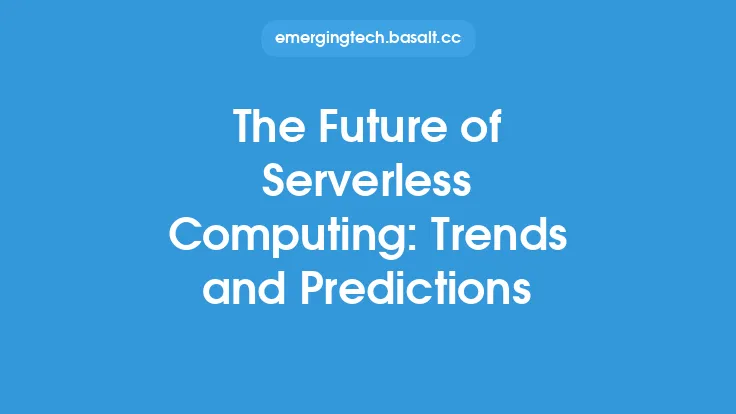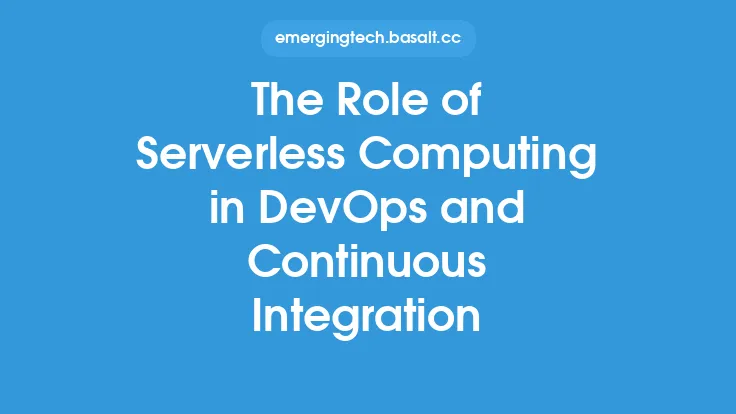Serverless computing has revolutionized the way we approach cloud computing, allowing developers to focus on writing code without worrying about the underlying infrastructure. One of the key architectural patterns that has emerged as a perfect match for serverless computing is event-driven architecture (EDA). In this article, we will explore the concept of event-driven architecture, its benefits, and how it integrates with serverless computing to create a powerful and scalable solution.
Introduction to Event-Driven Architecture
Event-driven architecture is a design pattern that revolves around the production, detection, and consumption of events. An event is a significant change in state, such as a user placing an order or a sensor detecting a change in temperature. In an EDA system, events are used to trigger reactions, which can be anything from sending a notification to updating a database. The key characteristics of EDA are loose coupling, scalability, and fault tolerance, making it an ideal fit for serverless computing.
How Event-Driven Architecture Works
In an event-driven architecture, components communicate with each other through events. These events are published to an event bus, which is responsible for routing them to the appropriate handlers. The handlers then process the events, performing any necessary actions. The event bus can be implemented using a variety of technologies, such as message queues, streaming platforms, or even serverless functions. The benefits of EDA include improved scalability, as components can be scaled independently, and increased flexibility, as new components can be added or removed without affecting the rest of the system.
Serverless Computing and Event-Driven Architecture: A Perfect Match
Serverless computing and event-driven architecture are a perfect match because they share many of the same principles. Both are designed to be scalable, flexible, and cost-effective. In a serverless EDA system, events are used to trigger serverless functions, which process the events and perform any necessary actions. The serverless functions are only executed when an event is received, which means that resources are only consumed when necessary. This approach eliminates the need for idle resources, reducing costs and improving efficiency.
Benefits of Using Event-Driven Architecture with Serverless Computing
The benefits of using event-driven architecture with serverless computing are numerous. One of the main advantages is improved scalability. With EDA, components can be scaled independently, which means that the system can handle large volumes of events without becoming overwhelmed. Another benefit is increased flexibility. New components can be added or removed without affecting the rest of the system, making it easier to evolve and adapt to changing requirements. Additionally, the use of serverless functions reduces the administrative burden, as there is no need to provision or manage servers.
Technical Considerations for Implementing Event-Driven Architecture with Serverless Computing
When implementing event-driven architecture with serverless computing, there are several technical considerations to keep in mind. One of the most important is the choice of event bus. The event bus is responsible for routing events to the appropriate handlers, and there are many different technologies to choose from, each with its own strengths and weaknesses. Another consideration is the design of the serverless functions. These functions should be designed to be stateless, as they will be executed on demand, and should be optimized for performance, as they will be executed in a short-lived environment.
Real-World Examples of Event-Driven Architecture with Serverless Computing
There are many real-world examples of event-driven architecture with serverless computing. One example is a e-commerce platform that uses EDA to process orders. When a user places an order, an event is published to the event bus, which triggers a serverless function to process the order. The serverless function updates the database, sends a notification to the user, and triggers any necessary workflows. Another example is a IoT system that uses EDA to process sensor data. When a sensor detects a change in temperature, an event is published to the event bus, which triggers a serverless function to process the data and update the database.
Best Practices for Implementing Event-Driven Architecture with Serverless Computing
When implementing event-driven architecture with serverless computing, there are several best practices to keep in mind. One of the most important is to design the system for scalability. This means using a scalable event bus and designing the serverless functions to be stateless and optimized for performance. Another best practice is to use a consistent event format, which makes it easier to develop and test the system. Additionally, it is essential to implement monitoring and logging, as this will help to identify and debug issues in the system.
Conclusion
In conclusion, event-driven architecture and serverless computing are a perfect match. The benefits of using EDA with serverless computing include improved scalability, increased flexibility, and reduced costs. By understanding the principles of EDA and how it integrates with serverless computing, developers can build powerful and scalable solutions that meet the needs of modern applications. Whether you are building a e-commerce platform, an IoT system, or any other type of application, event-driven architecture with serverless computing is definitely worth considering.





